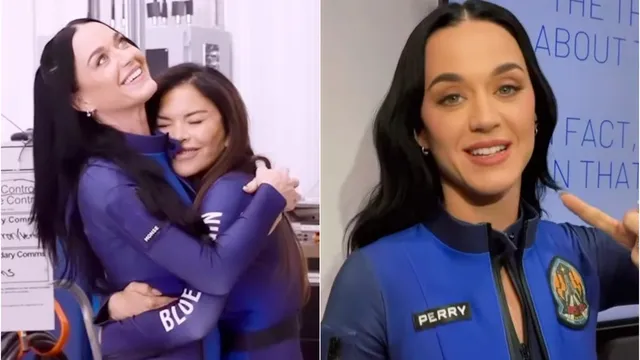
Katy Perry and Gayle King make history by launching into space with all-female crew
2025-04-14 18:01- The Blue Origin rocket launched a historic all-female crew, including Katy Perry and Gayle King, from West Texas.
- The mission, which lasted about 10 minutes, successfully showcased the potential for female representation in space travel.
- This significant event emphasizes the ongoing need for diversity in the commercial space sector and inspires future generations.
Express your sentiment!
Insights
On April 14, 2025, an all-female crew launched into space aboard Blue Origin's New Shepard rocket as part of the NS-31 mission from a site in West Texas. The crew was composed of notable figures including pop singer Katy Perry, TV host Gayle King, and several accomplished women in science and advocacy, such as former NASA engineer Aisha Bowe and civil rights activist Amanda Nguyen. The mission marked a significant moment in space travel, being the first female-only mission in more than six decades, emphasizing the need for diverse representation in the industry. The flight lasted approximately 10 minutes, during which the crew experienced a brief period of weightlessness before safely returning to Earth. Upon landing, inspired by the journey, crew members expressed feelings of connection and joy while marveling at the view of the Earth from space. Notably, Perry even sang a song during the return trip, showcasing the celebratory atmosphere of the mission. Jeff Bezos's partner Lauren Sanchez played a vital role in organizing the flight, purposefully selecting a female crew to showcase empowerment and inspire younger generations. Each of the women wore custom-designed space suits created to marry functionality with aesthetic appeal while ensuring comfort during the flight. Sanchez remarked on the significance of this event, highlighting it as a critical moment for women and the future of commercial space travel. The event has drawn both praise and criticism, with discussions surrounding the commercial nature of space tourism and its accessibility. It underlines the growing trend in celebrity participation in space exploration, aiming to foster interest in STEM fields among girls and young women while reigniting public curiosity about space. Despite ongoing debates on environmental impacts and the commercialization of the final frontier, the successful launch serves as a beacon of progress for women's representation in an industry historically dominated by men.
Contexts
The history of women in space exploration is a remarkable narrative that highlights the contributions and challenges faced by women in this predominantly male-dominated field. Early pioneers included women like Valentina Tereshkova, who became the first woman to fly in space on June 16, 1963, aboard Vostok 6. Her flight was a significant milestone not only for space exploration but also for gender equality, marking a turning point in the perception of women's capabilities in science and technology. Following Tereshkova, women began to slowly but steadily gain recognition in various aspects of space exploration, including engineering, research, and piloting spacecraft. Throughout the 1970s and 1980s, more women entered the ranks of astronauts. Landmark figures such as Sally Ride and Judith Resnik, both from NASA, were instrumental during this time. Sally Ride became the first American woman in space in 1983 aboard the Challenger, helping to further inspire a generation of girls interested in science and engineering. Unfortunately, the Challenger disaster in 1986 claimed the life of Judith Resnik among others, a tragedy that highlighted both the risks of space travel and the presence of women in crucial roles within NASA. The 1990s and early 2000s witnessed an acceleration in the involvement of women in space missions. NASA's efforts to create a more diverse workforce included initiatives to recruit women and minorities. Notably, Eileen Collins became the first female commander of a space shuttle mission in 1999, showcasing women’s leadership in space operations. Meanwhile, international partnerships in space exploration grew, allowing women from various countries to participate in missions. Figures such as Yang Liwei from China and European Space Agency astronauts began to emerge, bringing diverse perspectives and background knowledge into the field. As we moved into the 21st century, women continued to play major roles in significant missions like the International Space Station (ISS) visits and the Mars rover projects. The establishment of organizations aimed at supporting women in STEM fields, such as Women in Aerospace and the Society of Women Engineers, reflects a growing recognition of the importance of female contributions to science and technology, including space exploration. Today, we see women like Christina Koch and Jessica Meir making headlines with their historic all-female spacewalk in 2019, symbolizing not only the progress achieved but also the path still to come. The evolving landscape of women in space exploration continues to inspire future generations, proving that the sky is not the limit.